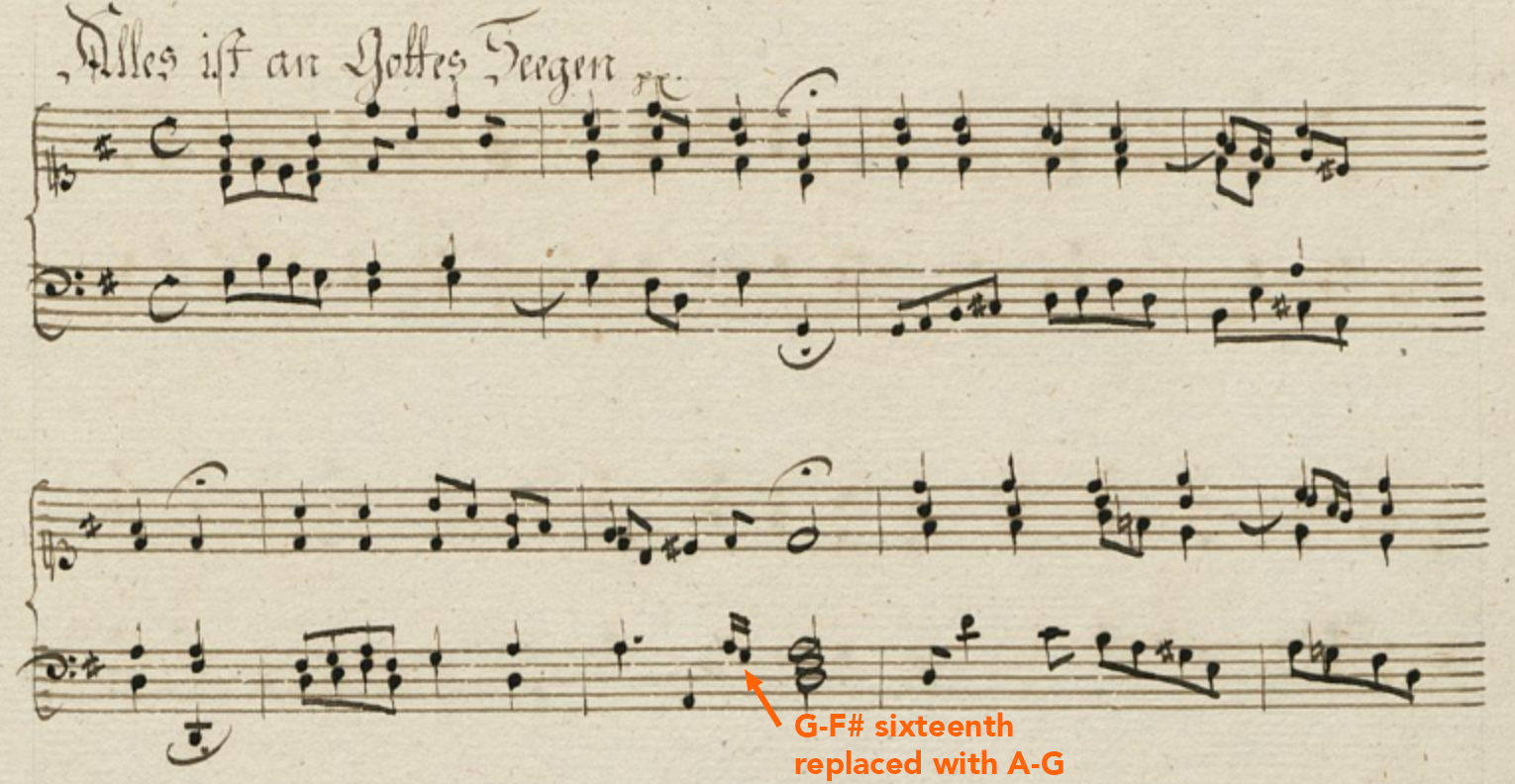 |





|
BWV 263

Previous: BWV 262
Next: BWV 264
Original source: Chorale, Alles ist an Gottes Segen, BWV 263
Chorale Text: Alles ist an Gottes Segen*, Nürnberg 1676
Tune: Alles ist an Gottes Segen, by Johann Löhner (1691) (Zahn 3838ff)
First Performance: Unknown
Appearance in Early Collections (Key):
Riemenschneider 128;
Breitkopf 128;
Birnstiel 132;
AmB 46II p.86 & p.115;
Penzel 156
Other Harmonizations: None
Notes
This chorale survives without text. The text that appears here is the one provided by editors of the Bach Gesellschaft Ausgabe (BGA).
Measure 6 of this chorale contain parallel fifths between the soprano (E–D) and the tenor (A–G) where the former is a Re–Do anticipation figure and the latter is a delayed arrival of the seventh of a V7 chord. These "cadential parallels" are considered non–structural since they involve non–chord tones. Cadential parallels can be found in several chorales, most notably in BWV 40.8 where four instances occur.
While the parallels in this chorale appear in the Breitkopf edition and in the first appearance of the setting in the AmB 46II manuscript on page 85, they are "corrected" in the second appearance on page 115. The tenor’s G–F# sixteenths are changed to A–G sixteenths.
AmB 46II page 115

The editorial inconsistencies between these early chorale collections are rather curious and reflect a strikingly liberal editorial methodology. It is difficult to say who is responsible for such editorial emendations. Simply assuming that C.P.E. Bach as primary editor of the Breitkopf is the principal culprit, as some have certainly assumed, fails to take into account the other early chorale collections that contain similar emendations, collections like the AmB 46II and Fasch manuscripts, both of which predate the Breitkopf and both which were quite possibly edited by someone other than C.P.E. Bach. Other potential culprits include Johann Kirnberger (who had a known association with "Anonymous J.S. Bach VI," the copyist of the AmB 46II manuscript), Friedrich Marpurg (who edited the early parts of the 1765 Birnstiel publication which served as a template for the Breitkopf) among other former students of J.S. Bach who were perhaps interested in enhancing the legacy of their great teacher as a master contrapuntalist.
For a complete account of consecutive fifths and octaves in the Bach chorales, see "Consecutive Fifths & Octaves in the Bach Chorales" featured on the Articles & Research page.
bach–chorales.com by Luke Dahn. Copyright 2018.